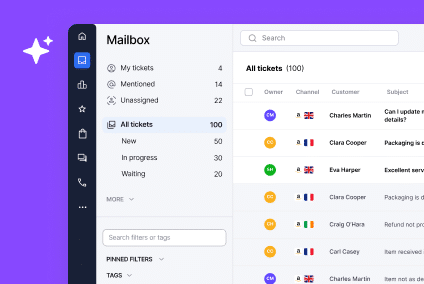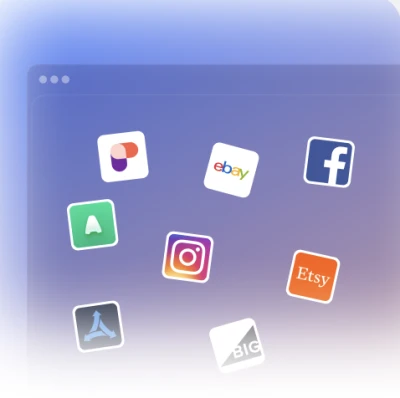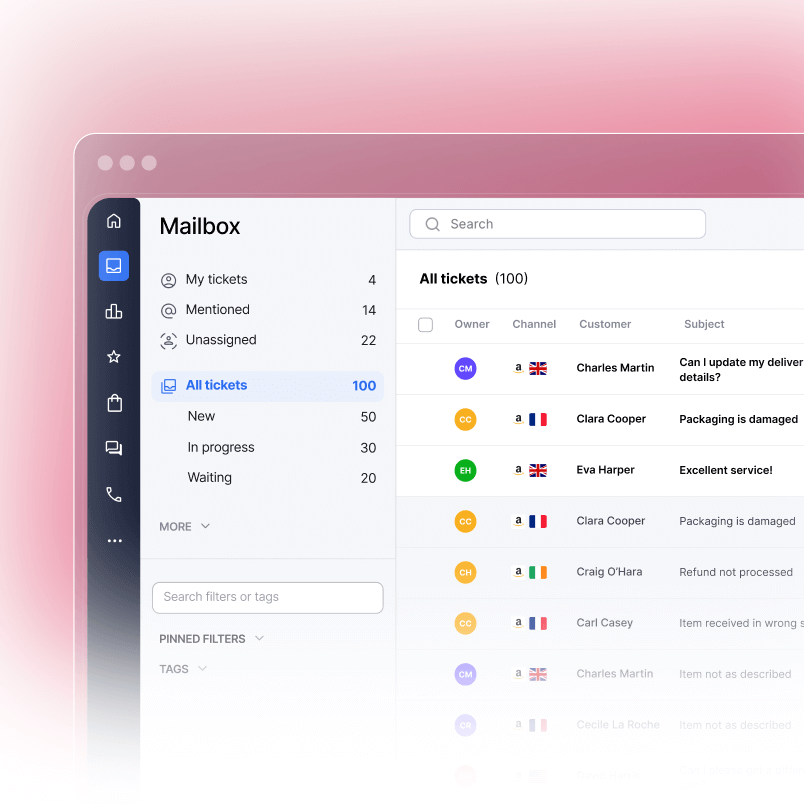A few weeks ago, we shared a couple of our favorite strategic tips for increasing eCommerce holiday seasonal sales. This time, we’re going to go deeper into this topic to focus on specific marketing to millennials and Gen Z consumers – the two generations driving holiday eCommerce growth in 2025.
It’s the season of giving (and receiving) and we’re gifting you with the perfect seasonal strategies to drive purchases from these powerful consumer groups who are reshaping the retail landscape.
The Holiday Buying Power of Millennials and Gen Z in 2025
Millennials might get attention for changing industries, but that doesn’t mean they aren’t shopping or spending their money. In fact, recent data shows that the average millennial shopper spent $470 more than Gen Z shoppers during the 2024 holiday season, with total spending averaging over $1,900 during holiday periods.
Updated 2025 Statistics:
- Millennials (ages 28-43): Average holiday spending of $1,900+ with established careers and higher disposable income
- Gen Z (ages 12-27): Average holiday spending of $1,300+ but growing rapidly as they enter the workforce
- Combined Impact: These two generations are increasing holiday spending by 19% in 2025, more than double the rate of older generations (7%)
It’s not that they’re afraid to spend money – they’re strategic about where their dollars are going. This presents incredible opportunities for brands and eCommerce stores that understand both the millennial audience and the emerging Gen Z market while tailoring their online shopping experience to fit their distinct generational needs.
Understanding How to Market to Millennials vs. Gen Z in 2025
Before diving into strategies, it’s crucial to understand the key differences between these generations:
Millennials (Born 1981-1996):
- 19% more likely to prefer online shopping than Gen Z
- Most comfortable spending $50-$100 online
- 74% make impulse purchases regularly
- Equal likelihood to buy on phones (48%) vs. in-store (49%)
- Established in careers with higher spending power
Gen Z (Born 1997-2012):
- 47% prefer to wait a few days before making purchases (more thoughtful spending)
- Most comfortable spending $20-$50 online
- 40% prefer online shopping, but value in-store experiences
- 27% bought products using mobile phones in the past week
- More cautious spenders entering the workforce
Increase Millennial and Gen Z eCommerce Sales with These 5 Updated Strategies
1. Create Social-Media-Optimized Best Seller Lists
Online shopping rule #1 remains the same: if your shopper is confused or uncertain about what to buy, they’re not going to pull that “buy button” trigger. However, a millennial marketing strategy in 2025 must account for social media influence and mobile-first behaviors.
2025 Update: Create multiple best seller lists optimized for social sharing and mobile viewing:
For Millennials:
- “Top Holiday Gifts for Established Professionals”
- “Best Gifts for New Parents and Homeowners”
- “Premium Picks for the Discerning Millennial”
For Gen Z:
- “Trending Gifts Under $50”
- “Sustainable and Ethical Holiday Picks”
- “TikTok-Approved Holiday Must-Haves”
Social Media Integration: Make these lists highly shareable with platform-specific formats:
- TikTok: Short video content showcasing top picks (Gen Z’s preferred platform)
- Instagram: Story highlights and carousel posts with product links
- Facebook: Detailed posts targeting millennials with higher spending power
Key Statistics: 91% of Americans like receiving promotional emails, and 92% of adults use email. However, add the fact that 46% of 18-34 year-olds completed at least a quarter of their holiday purchases through social media platforms in 2024, and you’ll see social integration is essential.
2. Launch Interactive Wish List Contests with Social Commerce Integration
The traditional wish list has evolved into a powerful social commerce tool. Marketing to millennials and Gen Z requires understanding that wish lists are now social experiences shared with hundreds or thousands of people.
2025 Enhanced Wish List Strategy:
Social Media Integration:
- Enable TikTok and Instagram shopping bag integration
- Create shareable wish list stories and posts
- Partner with micro-influencers for wish list creation
Gamification Elements:
- Set spending goals with milestone rewards
- Surprise creators with discount codes or free shipping
- Track social shares and engagement for contest entries
Multi-Platform Approach:
- For Millennials: Focus on Facebook and Instagram with detailed product information
- For Gen Z: Emphasize TikTok and Instagram Stories with quick, engaging content
Contest Mechanics: Hold a wish list contest where the more shares a user’s list receives, the higher their chances of winning. This taps into both generations’ desire for social validation while driving organic reach.
Pro Tip: Track social shares, impressions, and contest ROI through integrated analytics. The viral nature of wish list sharing can exponentially increase your holiday reach, especially among Gen Z, who are 24% more comfortable completing transactions on social platforms.
3. Implement AI-Powered New Product Alerts and Early Access Programs
This strategy has evolved significantly for 2025. Both millennials and Gen Z value being early adopters, but their discovery preferences differ dramatically.
2025 New Product Strategy:
For Millennials:
- Email-first new product announcements with detailed information
- Early access programs for loyalty members
- Professional networking platform promotion (LinkedIn)
For Gen Z:
- Social media-first reveals on TikTok and Instagram
- Influencer partnerships for product launches
- Interactive AR/VR product previews
Early Adopter Statistics:
- 52% of millennials rank above average as early adopters
- Gen Z discovery behavior: 27% discover new products through social media platforms
- 75% of Gen Z follows influencers and trusts their recommendations more than traditional advertising
Implementation:
- Use AI-powered personalization to send targeted alerts based on browsing behavior
- Create platform-specific content (professional tone for millennials, casual and authentic for Gen Z)
- Implement countdown timers and limited availability messaging to create urgency
4. Develop Multi-Generational Gift Bundles with Flexible Payment Options
The classic gift bundle strategy has evolved to address the different spending patterns and payment preferences of 2025 consumers.
2025 Bundle Strategy:
Millennial-Focused Bundles ($75-$200 range):
- “Professional Starter Packs”
- “New Parent Essentials”
- “Home Entertainment Upgrades”
- “Premium Self-Care Collections”
Gen Z-Focused Bundles ($25-$75 range):
- “Sustainable Living Starter Kits”
- “Dorm Room Essentials”
- “Creative Hobby Collections”
- “Friendship Gift Sets”
Cross-Generational Bundles:
- “Multi-Generational Family Packs”
- “Office Secret Santa Collections”
- “Friend Group Gift Sets”
Payment Flexibility:
- Buy Now, Pay Later (BNPL) integration: 20% of millennials and over 50% of Gen Z use BNPL services
- Mobile wallet support: 44.1% of millennials use mobile wallets at point-of-sale
- Instalment payment options for higher-value bundles
5. Create Authentic, Values-Based Marketing Campaigns
2025 Update: Both generations prioritize authenticity and social responsibility, but express these values differently.
Millennial Values Focus:
- Financial responsibility and investment value
- Family and career advancement
- Premium quality and durability
- Professional reputation and status
Gen Z Values Focus:
- Environmental sustainability and ethical practices
- Social justice and inclusivity
- Authenticity and transparency
- Unique, personalized experiences
Implementation Strategies:
Sustainability Integration:
- Highlight eco-friendly packaging and carbon-neutral shipping
- Partner with sustainable brands for collaborative bundles
- Create “second-hand” or refurbished gift options (popular with Gen Z)
Authentic Content Creation:
- User-generated content campaigns featuring real customers
- Behind-the-scenes content showing company values in action
- Employee advocacy programs showcasing diverse team members
Social Responsibility Messaging:
- Charitable partnerships and giving-back programs
- Transparent business practices and ethical sourcing
- Community involvement and local business support
Advanced Millennial Marketing and Gen Z Engagement Tactics for 2025
Mobile-First Customer Experience
Critical Statistics:
- Millennials: 48% make impulse purchases on mobile phones
- Gen Z: 40% prefer online shopping with strong mobile preferences
- Mobile Commerce Growth: 27% of Gen Z bought products via mobile in the past week
Implementation:
- Optimize for mobile-first shopping experiences
- Implement one-click purchasing options
- Create mobile-specific promotional campaigns
- Use location-based targeting for local inventory
Advanced Customer Service Integration
Excellent customer experience strategy becomes even more critical when targeting younger generations who expect instant, personalized service.
2025 Customer Service Expectations:
- Response Time: Both generations expect responses within 2-4 hours
- Channel Preferences: Millennials prefer email and live chat; Gen Z prefers social media and messaging apps
- Self-Service Options: 68% prefer researching solutions independently before contacting support
eCommerce Integration: Use comprehensive eCommerce customer experience platforms to manage customer communications across all channels, ensuring consistent, personalized service that builds loyalty and drives repeat purchases.
Social Commerce and Influencer Partnerships
Platform-Specific Strategies:
TikTok (Gen Z Primary):
- Short-form product demonstration videos
- Influencer collaborations and challenges
- User-generated content campaigns
Instagram (Cross-Generational):
- Shopping-enabled posts and stories
- Influencer partnerships for product launches
- Behind-the-scenes content
Facebook (Millennial-Focused):
- Detailed product information and reviews
- Community groups and discussions
- Targeted advertising with detailed demographics
Measuring Success: Key Metrics for 2025
Millennial-Focused KPIs:
- Average order value and lifetime customer value
- Email engagement rates and conversion
- Mobile app adoption and usage
- Customer retention and loyalty program participation
Gen Z-Focused KPIs:
- Social media engagement and viral coefficient
- Mobile conversion rates and session duration
- Influencer campaign reach and engagement
- User-generated content creation and sharing
Cross-Generational Metrics:
- Multi-channel customer journey completion
- Social commerce conversion rates
- Customer satisfaction scores across touchpoints
- Holiday season year-over-year growth
‘Tis the Season for Strategic Generational Marketing
If you’re looking for an end-of-year marketing to millennials and Gen Z strategy with a success rate better than mistletoe, you’ve found it. The key is understanding that while both generations are digitally native, they have distinct preferences, spending patterns, and communication styles.
2025 Success Framework:
- Personalize your approach based on generational preferences
- Integrate social commerce across all marketing channels
- Optimize for mobile-first experiences
- Authenticate your brand values and messaging
- Flexibilize payment options and customer service channels
By implementing these strategies and understanding the nuanced differences between millennial and Gen Z consumers, online sellers can effectively capture both markets during the holiday season and beyond.
The future of eCommerce marketing lies in multi-generational strategies that respect each group’s unique characteristics while delivering exceptional experiences across all touchpoints.
eDesk is the high-powered helpdesk for online sellers, built for eCommerce from the ground up. Our platform integrates seamlessly with social media customer service channels and provides the personalized, responsive support that both millennials and Gen Z expect. Start your free trial today and save time, money, and headaches while delivering the customer experience that drives holiday sales!
Book a free demo today to learn more about how eDesk can help you make the most of this holiday season’s selling opportunities.




